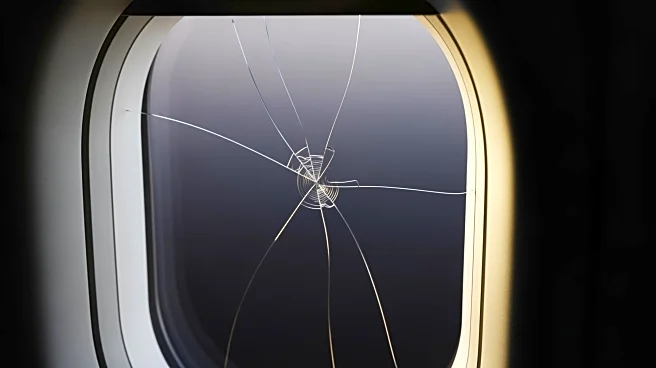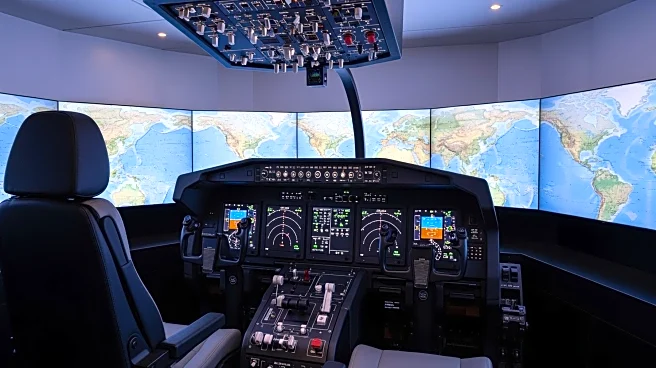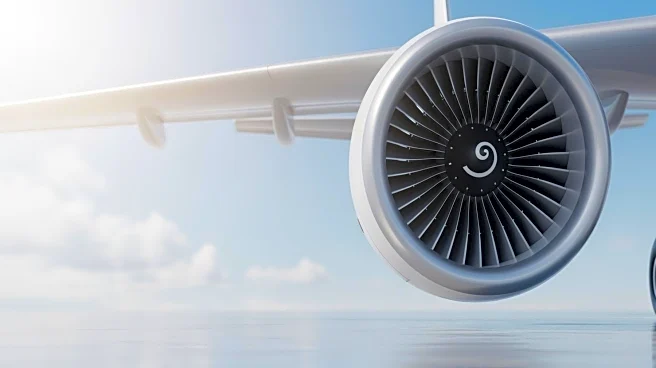What's Happening?
A United Airlines Boeing 737 MAX 8, operating flight UA1093 from Denver to Los Angeles, was forced to divert to Salt Lake City after a windshield crack was discovered mid-flight. The incident occurred on October 16, 2025, with 140 passengers and crew
on board. The aircraft descended from 36,000 feet to 26,000 feet before safely landing at Salt Lake City International Airport. Passengers were rebooked on a replacement aircraft to continue their journey to Los Angeles, resulting in a six-hour delay. The incident was notable due to scorch marks on the windshield and bruising on the pilot's arm, suggesting a high-energy impact. Speculation has arisen about the cause, with theories including space debris or a small meteorite, although these remain unverified. United Airlines has reported no injuries beyond the pilot's minor bruising, and the incident is under investigation.
Why It's Important?
The incident highlights the potential vulnerabilities in aviation safety, particularly concerning unexpected high-energy impacts. While aircraft windshields are designed to withstand significant stress, the possibility of space debris or meteorite impacts presents a rare but serious risk. This event underscores the importance of robust safety protocols and the need for ongoing research into mitigating such risks. For United Airlines, the incident could lead to increased scrutiny from aviation authorities and potential operational reviews. The broader aviation industry may also see renewed focus on the durability of aircraft components and the procedures for handling in-flight emergencies.
What's Next?
The investigation into the cause of the windshield crack will likely involve detailed analysis by aviation authorities, including the Federal Aviation Administration. United Airlines may face pressure to enhance safety measures and review maintenance protocols. The incident could prompt discussions within the industry about the risks posed by space debris and the need for improved detection and avoidance systems. Passengers may experience heightened awareness and concern about flight safety, potentially influencing airline policies and customer communication strategies.
Beyond the Headlines
This incident raises questions about the preparedness of commercial aviation to handle rare but potentially catastrophic events like space debris impacts. It also highlights the importance of pilot training and quick decision-making in ensuring passenger safety. The event may lead to discussions about international cooperation in tracking and managing space debris, as well as the development of new technologies to protect aircraft from such threats.















